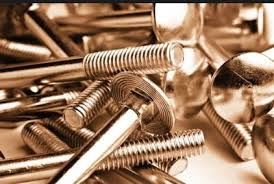There are many reasons why one may want to change the surface elements of metals via surface treatments. Examples include improving resistance to wear or corrosion, fixing damage on the surface, adding ideal features to ordinary metals or even enhancing the aesthetic of the surface. Whatever the reason, there are many options available on how to do so.
To ensure that you’re being safe when using surface treatments, this article may be helpful
Metal Peening
By using this method, a shot blast or laser is used on the metal surface to heighten its resistance to wear and tear. The blast will hit the metal at a high velocity, causing minimal damage which is ideal for retaining residual tension.
Metal Polishing
This method is one of the least invasive out of all the surface treatments, meaning it can be either chemical or mechanical. It uses a harsh material to remove all imperfections from the surface, leaving it looking brand new, smooth and shiny. It usually starts with a thorough cleaning, closely followed by a descaling and finally, a polishing.
Metal Burnishing
This process involves using chemicals to blacken parts of the metal, thereby improving its overall appearance while protecting it against corrosion or wear. The metal will gain a shiny blue-black hue after the process without lessening its thickness. Burnishing makes use of lead acetate, or a liquid containing it, for most ferrous materials apart from steel.
Metal Phosphating
This method is used on metal surfaces where one chemically alters the surface using phosphate crystals. One can make use of zinc, manganese or iron phosphate crystals to enhance corrosion and wear resistance, along with the overall quality of the metal.

Electroplating Metal
This process entails applying a layer of metal onto a metal surface – using a different kind of metal – by means of an electrochemical process.

Anodising
This typically finds its use on aluminium and alloys with the application of an external current and electrolytic submersion to create a resistant coating. This enhances both wear and corrosion resistance while improving the overall aesthetic of the surface.